Collaborative Works
These art works are part of the in-house productions of Project Cinema City. They have evolved through a process involving different sets of researchers and artists, and through a longish period of time. The works were collaborative in the sense that one round of research / production ended at a point where another layer of work / intervention begun. Thus, the works evolved with autonomous yet interdependent contributions from people belonging to different disciplines – research, video making, architecture, design, writing and so on. Thus, at any given point, these works remain complete and yet open to further layerings / interventions / annotations. As a structure it mimicked the post-industrial production process of working through disparately located sweatshops.
The Western Suburb
Video installation with 13 monitors and projection on acrylic sheets. Size: (minimum) floor space – 15 x 20 ft, Sound
- Videos: Avijit Mukul Kishore, Mamta Murthy and Rikhav Desai
- Design: Kausik Mukhopadhyay
- Research: Design Cell, KRVIA
The video installation traces the low-end production units, hidden in holes in the walls, that produce and service the basic materiality of cinema – costume maker, wig maker, prop rental, light rental, rain and smoke maker, stud farm, animal farm, banner painter, set manufacturer, and so on. The installation places the hidden labours and artisanal inputs in the panoramic-scape of the city.
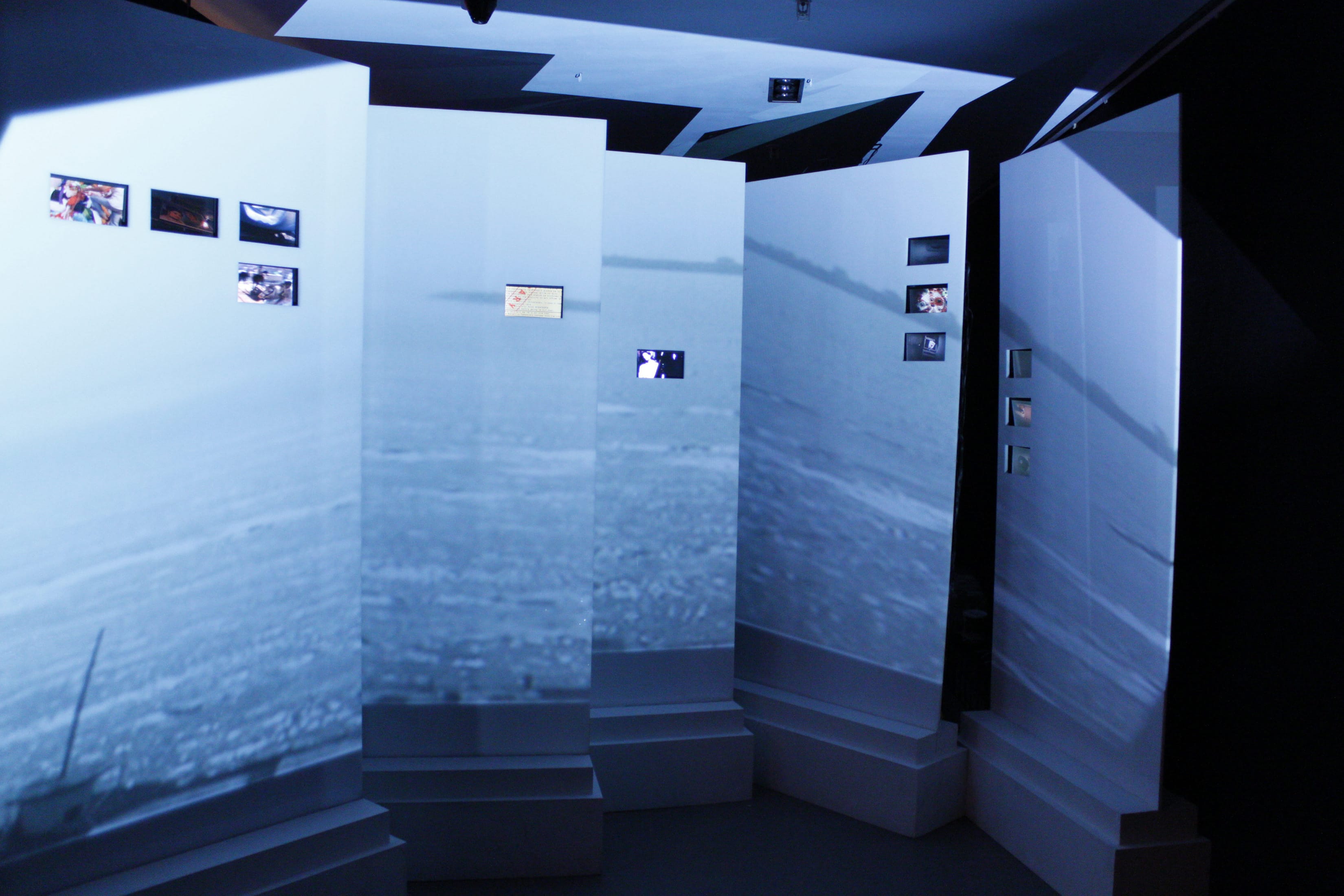
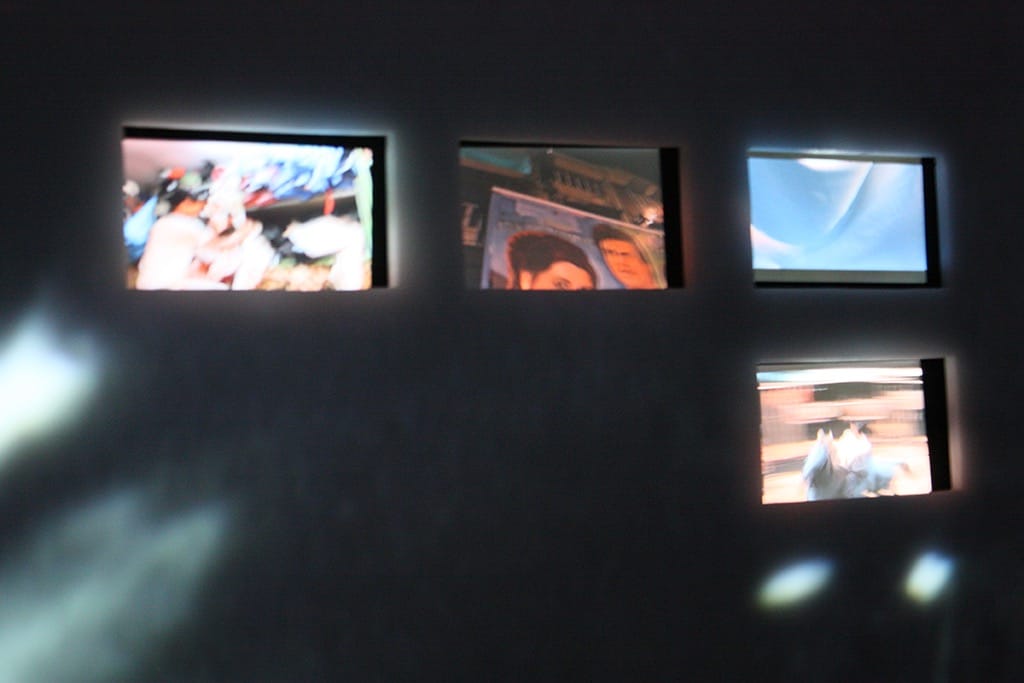
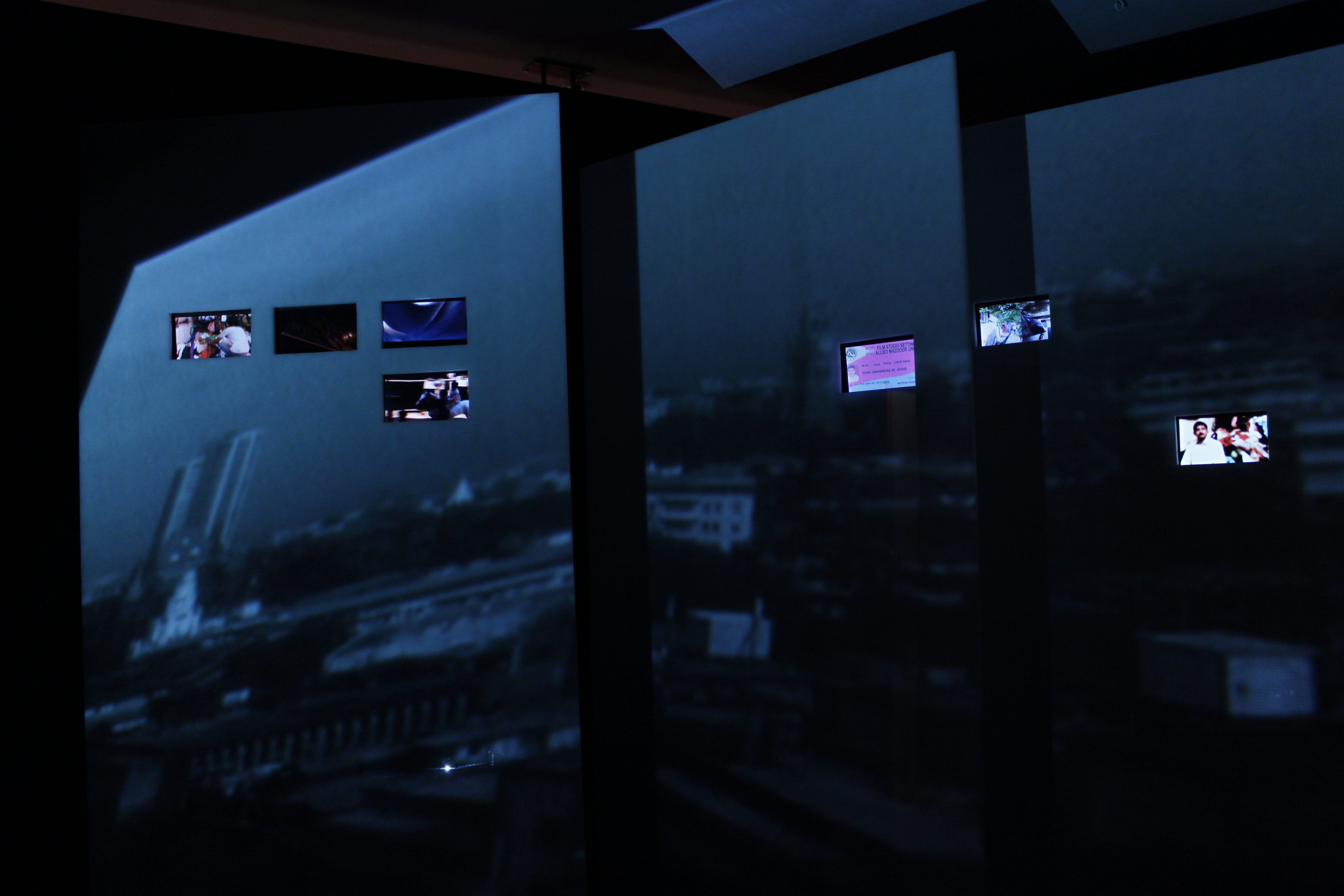
Imaginary/Tactile
Sculptural installation on printed wood and MDF boards, video projection. Size: 5 x 5 x height 11 ft
- Architecture: Apurva Parikh
- Graphics: Simran Dhaliwal
- Motion Graphics: Abeer Gupta
- Research: Paroma Sadhana
The Studio: a work space that accumulates material residuals of filmmaking.
The Theatre: a shrine that constructs and projects social–personal associations and memories.
These two establishments/spaces stand at two ends of cinema culture. The studio space converts accumulated material into spectacles that turn even the familiar into distant and desirable. The theatre creates a sensorial experience for its patrons by which the distant insinuates itself into that which is accessible, if not familiar. The whole journey resembles a mirror maze: from a convex mirror that converts a wider field into a shrunk image, to a concave mirror that alters the magnification of the image at will. It can even be likened to a belief system that inverts notions of distance and familiarity.
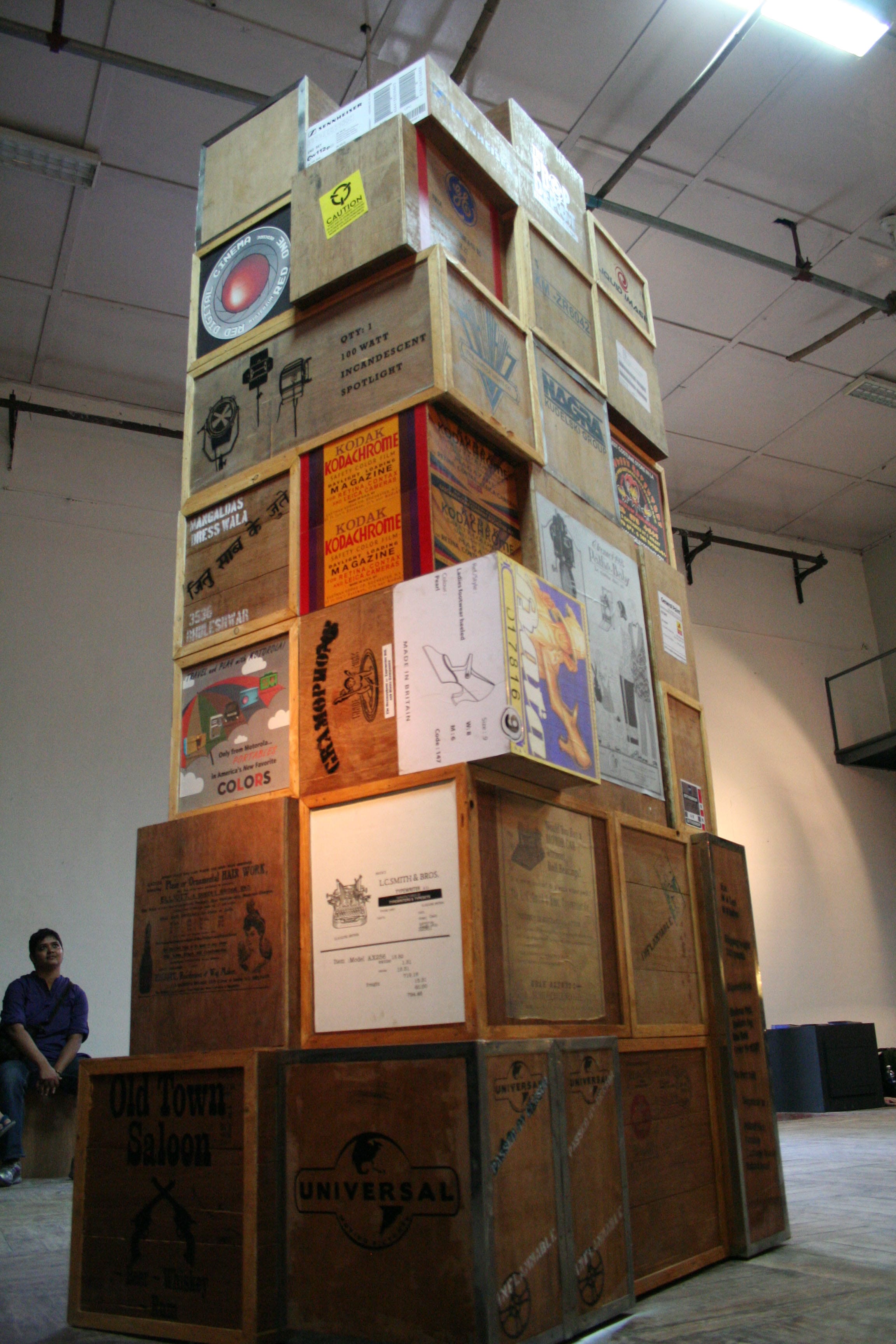
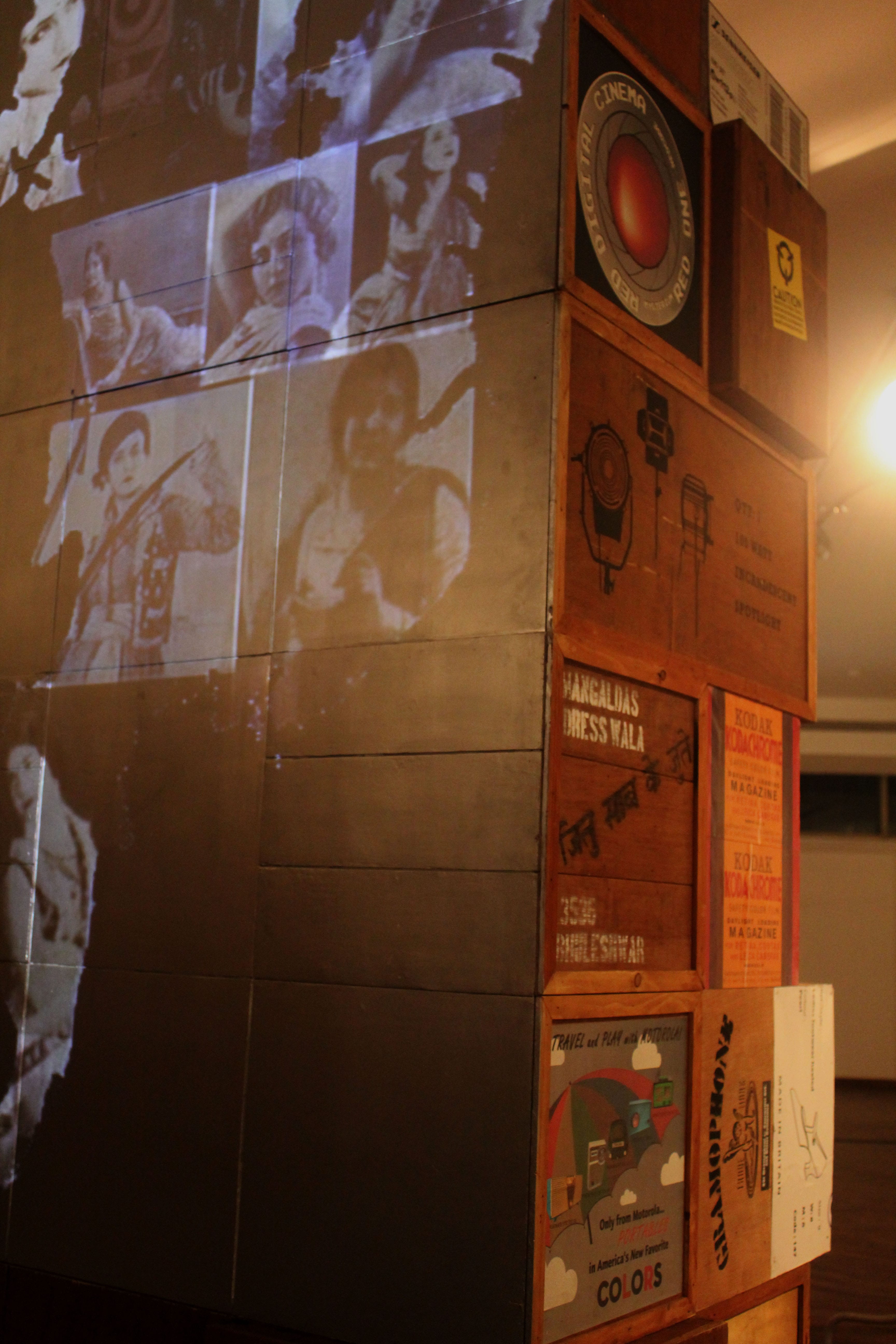
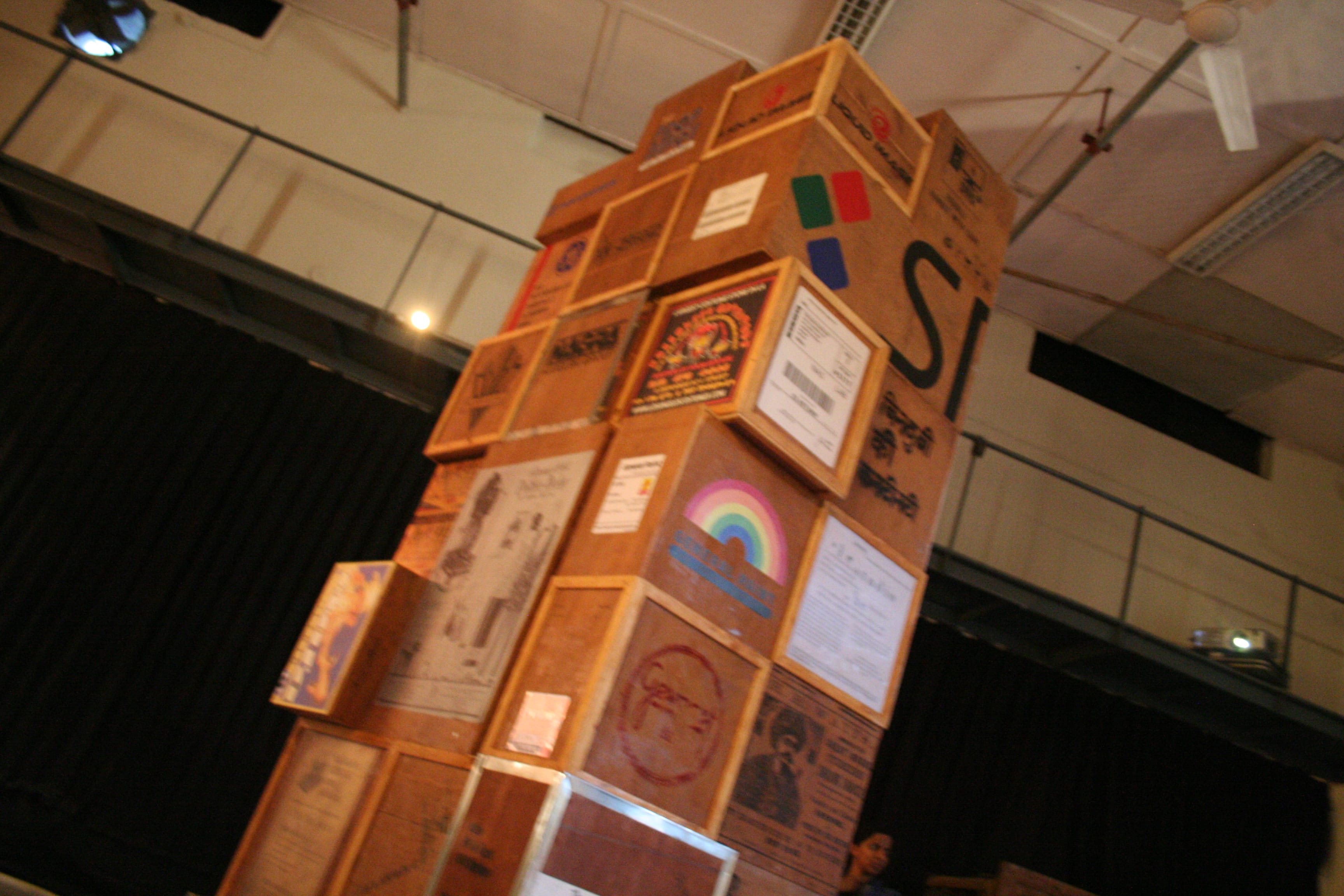
Cinema City Lived: Pipeline Network
Architectural installation of PVC pipes with cutouts of graphics, models, objects and animated images. Size: adjustable
- Architecture: Apurva Parikh and Rohan Shivkumar
- Objects: Apurva Talpade, Elizabeth Mathew and Shivani Shedde
The pipeline network is conceived as the stitching pattern that holds the map of the cinema city together – production units, shooting studios, exhibition theatres, cinematic locations and their interfaces. Cinema of a hundred years, with all its eras, genres and materiality, lives simultaneously in the city. From the colonial architecture of art deco cinema halls to informal cinema houses in shanties; from sprawling outdoor studios with location templates for all purposes and narratives to dingy workshops in residential areas; from the arterial railway line of the city to the iconic Marine Drive – all these coexist in layers within the narrow strip of the land, called Bombay/Mumbai. The network of these spaces resembles an intricately laid out pipeline for essential services in urban settlements.

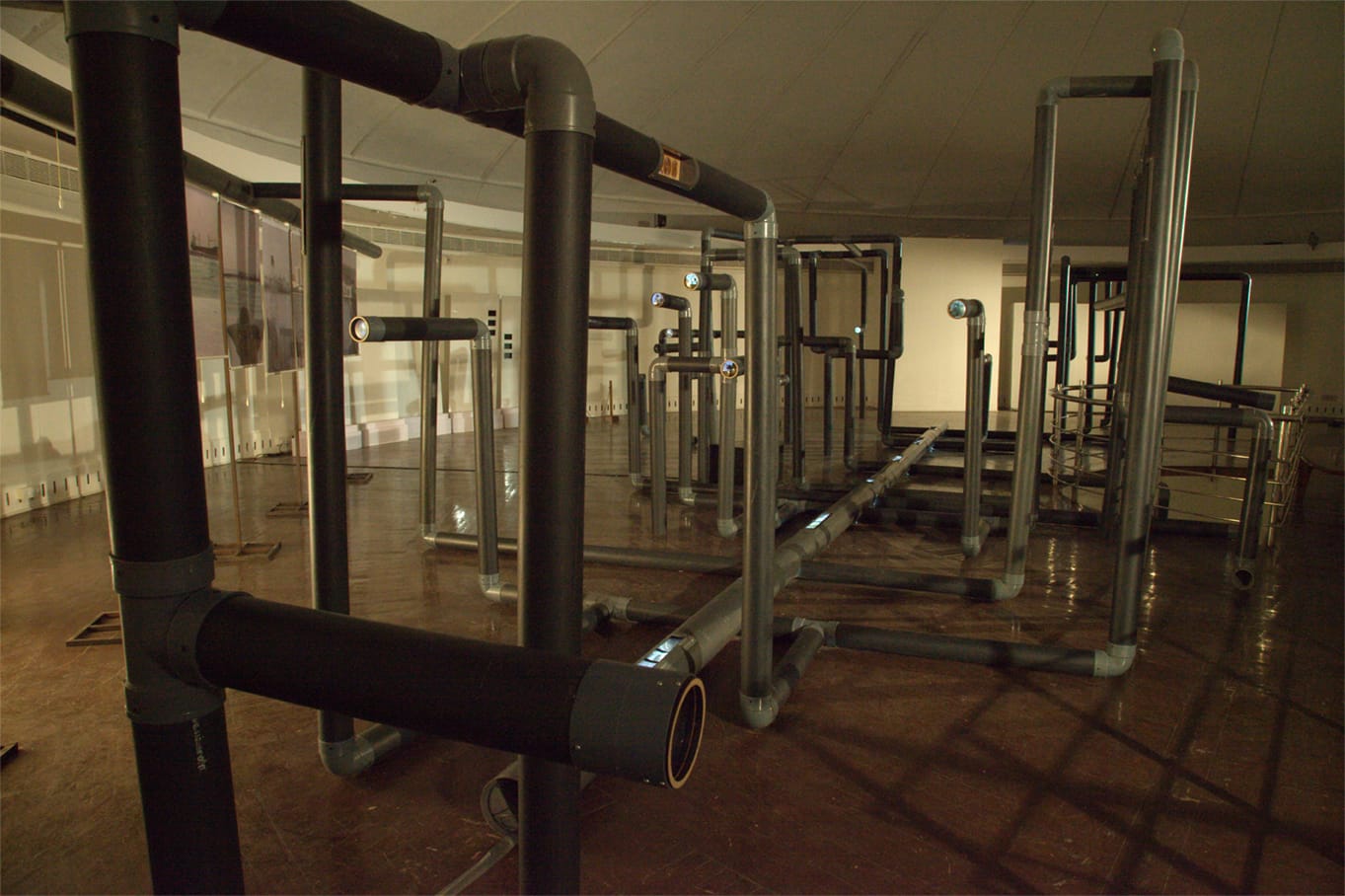
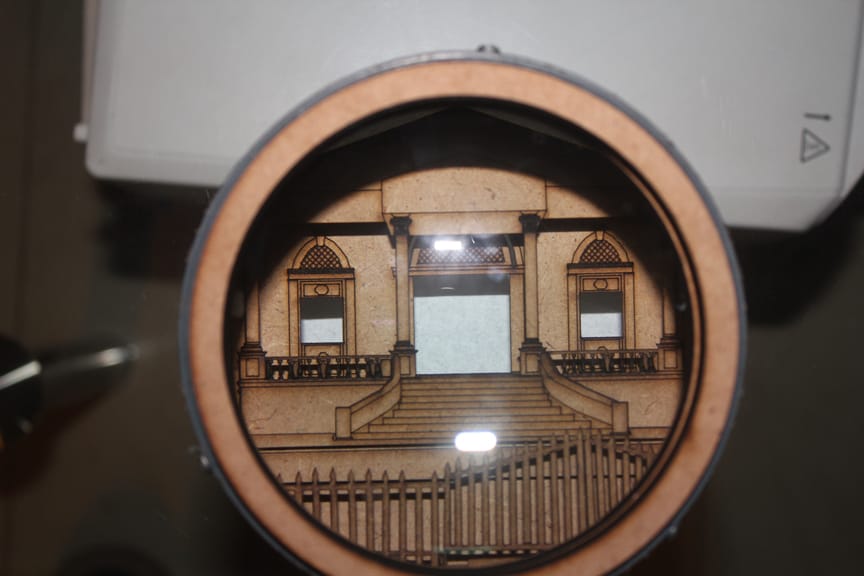
The Table of Miscellany
Wooden table with objects made of glass, acrylic, papers and motors. Size: 28 x 5 x height 3.3 ft
- Installation: Paroma Sadhana and Samma Blu
- Images: Amit Madheshiya, Avijit Mukul Kishore, Mamta Murthy, Sameer Tawde, Simran Dhaliwal
- Atlas: Design Cell, KRVIA
Books that are not written, magazines that are fossilised, texts that can be seen but not accessed, maps that attempt to address the ephemeral, found images that upset the timeline, tools that are rendered obsolete, photos that capture multiple contemporaneities – all collated in a library-cum-laboratory look-alike table top. Table of Miscellany is an imagination of an oversized workstation that itself has grown into an archive. The working tools and materials, over time, have turned into artefacts, and yet they possess some ability to occasionally turn relevant and productive. Miscellaneous markers of yesteryears, of yesterday and of today, lie on the same surface, challenging the common perceptions of chronology.
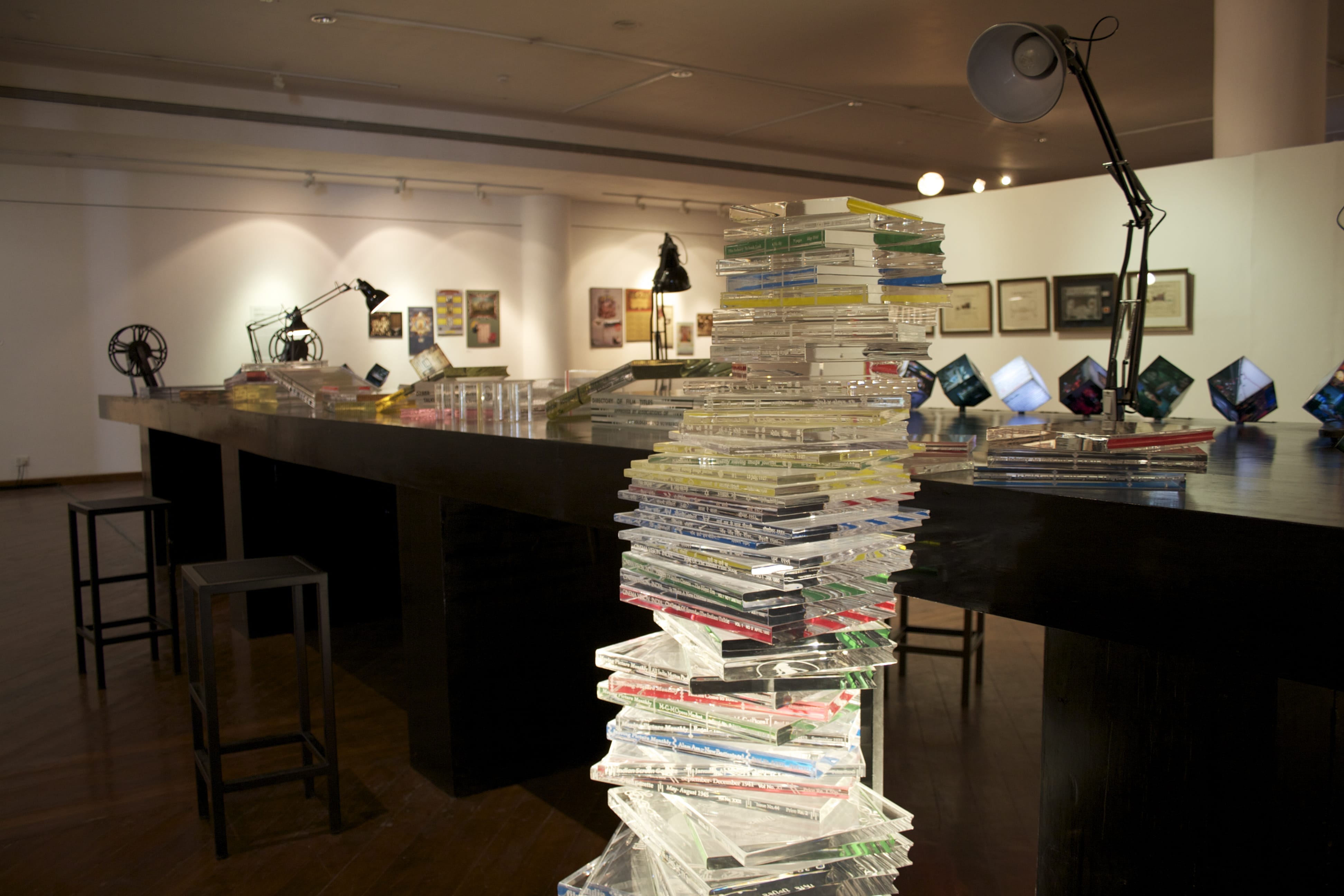

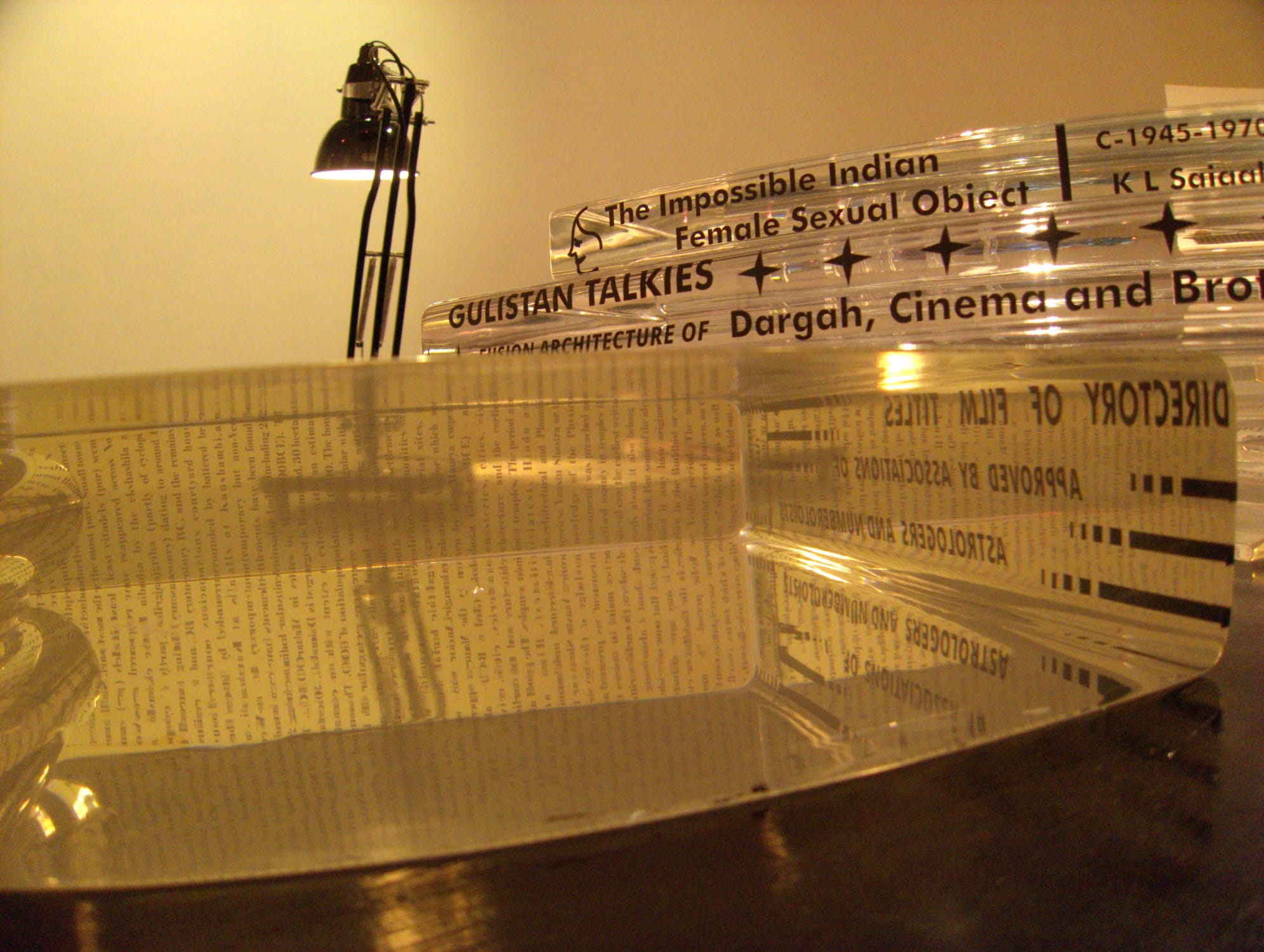
 Menu
Menu